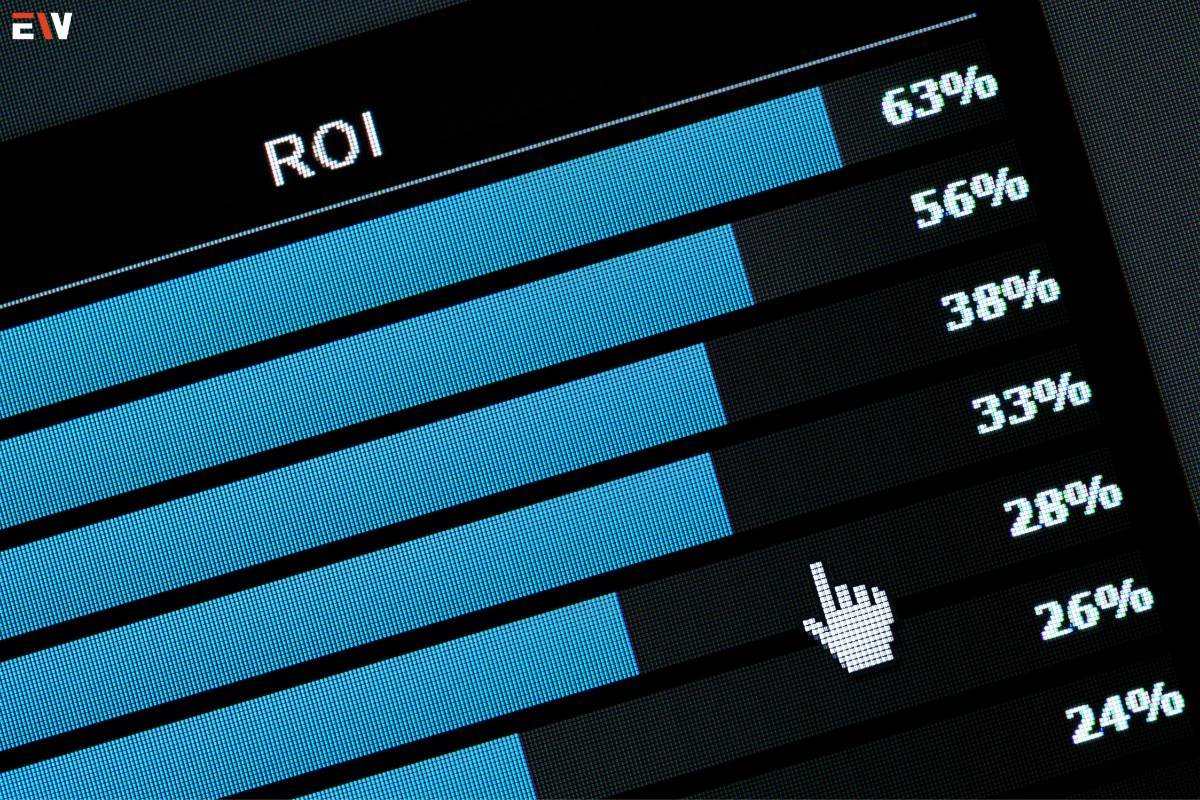In today’s digital age, small businesses have a powerful tool at their disposal, online advertising. It allows you to reach potential customers around the world with just a few clicks. But here’s the big question, Are you really getting the most out of your online ads? Do you truly understand the ROI (Return on Investment) of your online advertising efforts? In this article, we will break it down in simple terms and help you navigate the world of online ads to ensure you’re making the most of your budget.
What Is the ROI of Online Ads?
Let’s start with the basics. ROI of online ads refers to the return on investment you get from the money you spend on online advertising. In other words, it’s about figuring out whether your online ads are making you more money than you’re putting into them. This is a critical metric for small businesses because every dollar counts.
Calculating ROI of Online Ads

To calculate the ROI of your online ads, you need to do a bit of math, but don’t worry, it’s not rocket science. Here’s the formula:
ROI (%) = (Net Profit from Ads – Cost of Ads) / Cost of Ads * 100
Let’s break it down:
Net Profit from Ads: This is the additional profit you’ve made as a direct result of your online advertising efforts. It includes sales generated from the ads minus any costs associated with those sales.
Cost of Ads: This is the total amount you’ve spent on your online ads during a specific period.
Multiply the result by 100 to get the ROI percentage.
The Importance of Tracking ROI of Online Ads
Knowing your ROI is crucial for several reasons:
a. Budget Allocation: It helps you decide where to allocate your advertising budget. If a particular online ad campaign has a high ROI, you might want to invest more in it.

b. Optimization: Understanding your ROI allows you to optimize your ads for better results. You can make data-driven decisions to improve your campaigns.
c. Cost Control: It helps you control costs. If an ad campaign has a low ROI, you can adjust or stop it to prevent wasting money.
Tools for Tracking ROI of Online Ads
Tracking ROI might sound daunting, but there are many user-friendly tools available to help small business owners. Here are a few options:
a. Google Analytics: This free tool provides valuable insights into your website’s performance, including the impact of your online ads.
b. Facebook Ads Manager: If you’re running ads on Facebook, their Ads Manager offers detailed tracking and analytics.
c. Email Marketing Platforms: If you’re using email marketing as part of your online advertising strategy, platforms like Mailchimp or Constant Contact provide ROI tracking.
d. Third-Party Tools: There are various third-party tools and software that specialize in tracking online ad ROI, such as HubSpot and SEMrush.
Setting Clear Goals
Before diving into online advertising, it’s essential to set clear goals. What do you want to achieve with your ads? Whether it’s increasing website traffic, generating leads, or boosting sales, having specific objectives will help you measure your ROI effectively.
Measuring the Cost of Ads
To calculate ROI accurately, you must track all costs associated with your online ads. This includes not only the amount you spend on advertising platforms but also any expenses related to creating ad content, such as graphic design or copywriting.
Determining Net Profit from Ads
Calculating your net profit from ads can be a bit trickier. It involves attributing sales or conversions directly to your online ad campaigns. Here are some steps to help you with this:
a. Conversion Tracking: Implement conversion tracking on your website. This could be setting up goals in Google Analytics or using conversion tracking pixels provided by advertising platforms like Facebook or Google Ads.
b. Customer Attribution: Determine which customers came to you as a result of your ads. This can involve asking customers how they found your business or using tracking codes in your ads.
c. Revenue and Cost Analysis: Analyze the revenue generated from customers who came through your ads and subtract any costs associated with those sales.
Understanding ROI of Different Ad Channels
Not all online advertising channels are created equal, and they won’t all yield the same ROI. It’s crucial to understand the strengths and weaknesses of each channel you use:
a. Social Media Ads: Platforms like Facebook and Instagram offer highly targeted advertising, making it easier to reach your ideal audience. However, competition can be fierce, driving up ad costs.

b. Google Ads: These can be effective for capturing potential customers actively searching for your product or service. The competition varies by industry and keywords.
c. Content Marketing: Creating valuable content can attract organic traffic over time. While this may have a lower initial ROI, it can pay off in the long run.
A/B Testing for Better ROI
One powerful technique for improving your ROI is A/B testing. This involves creating two versions of an ad (A and B) with slight variations, such as different headlines or images. You then run both versions simultaneously and compare the results to see which one performs better. By continuously refining your ads through A/B testing, you can increase your ROI of online ads over time.
Regular Review and Adjustment
Your work doesn’t end once you’ve set up your online ad campaigns and calculated their ROI. Regularly review your campaigns’ performance, and be prepared to make adjustments based on what the data tells you. This might involve tweaking ad copy, adjusting targeting parameters, or even pausing campaigns that aren’t delivering a positive ROI.
Conclusion
As small business owners, it’s time to take control of your online advertising efforts and truly understand the ROI of online ads. With the right tools, clear goals, and a commitment to tracking and optimization, you can make every dollar you invest in online advertising count. Remember, it’s not just about spending money on ads; it’s about making money from them. So, calculate your ROI, refine your strategies, and watch your small business thrive in the digital world. The ROI of online ads is your key to success!










